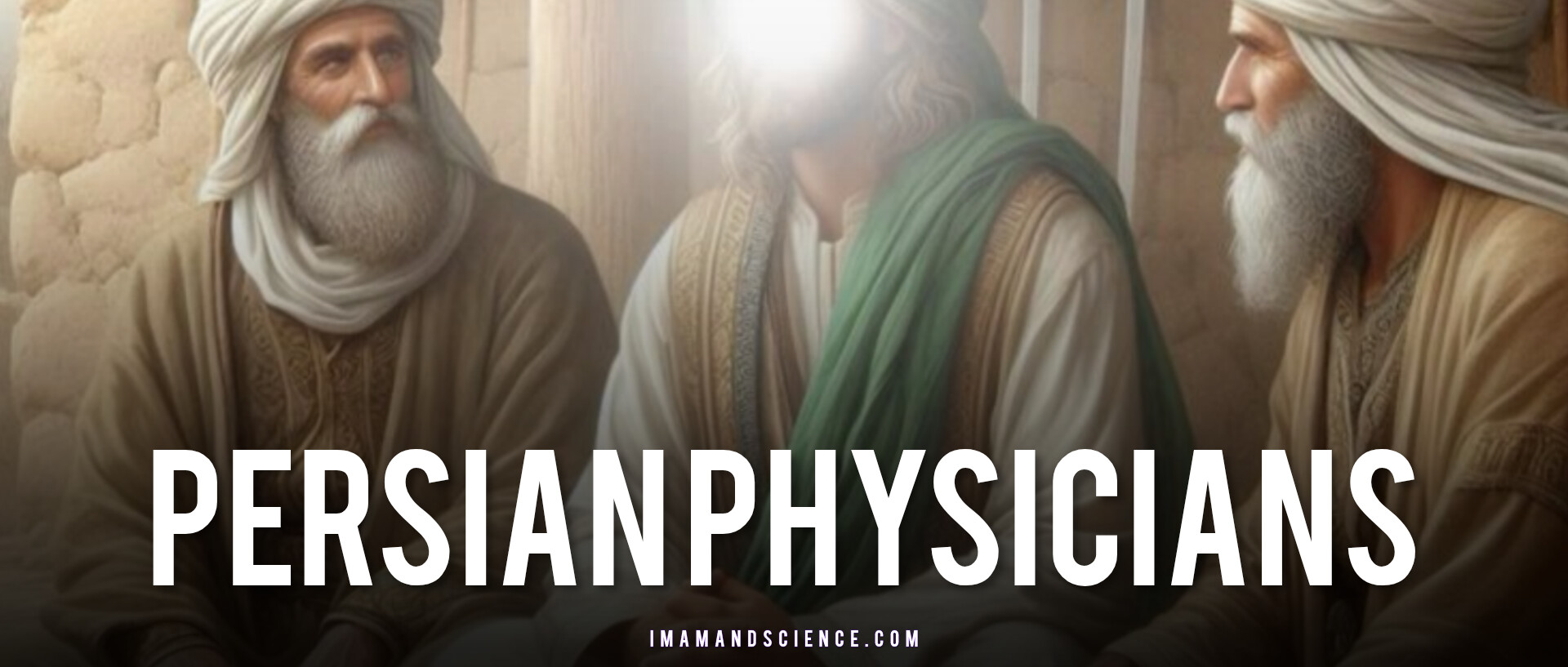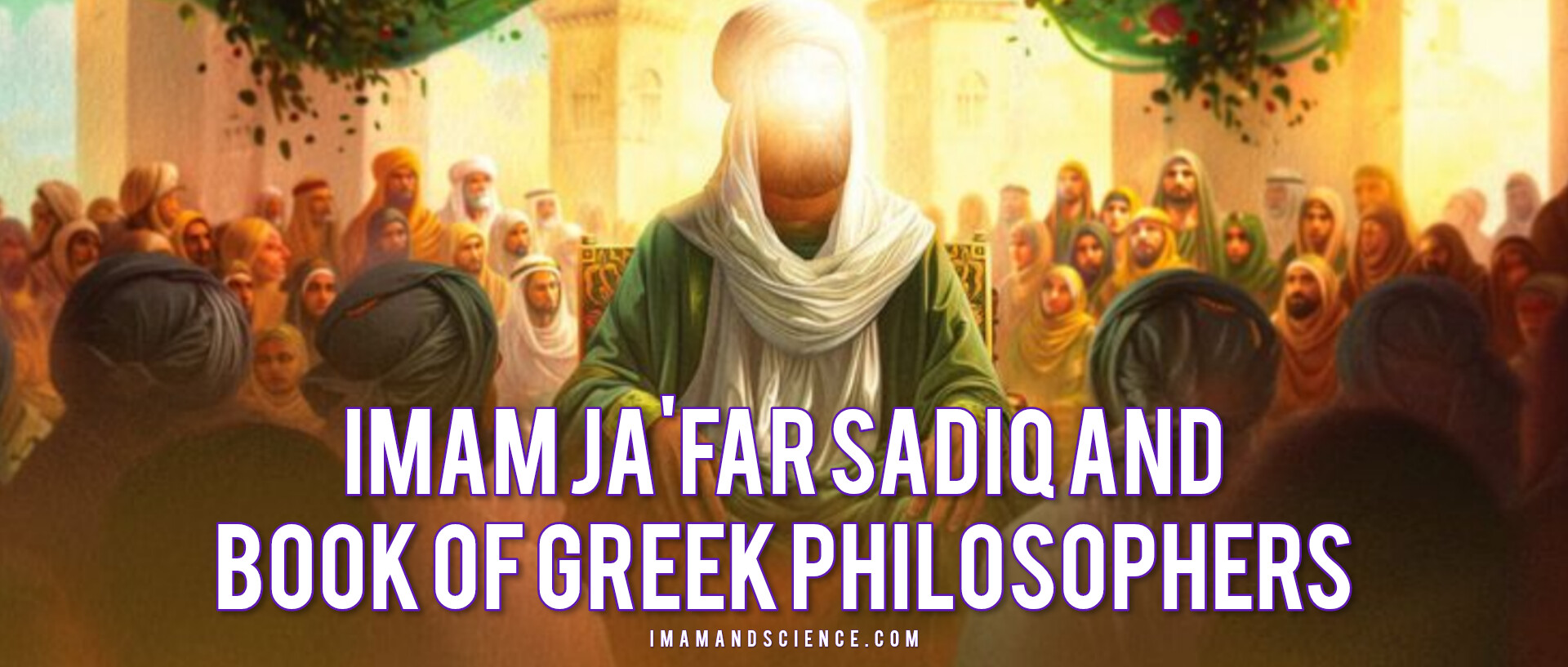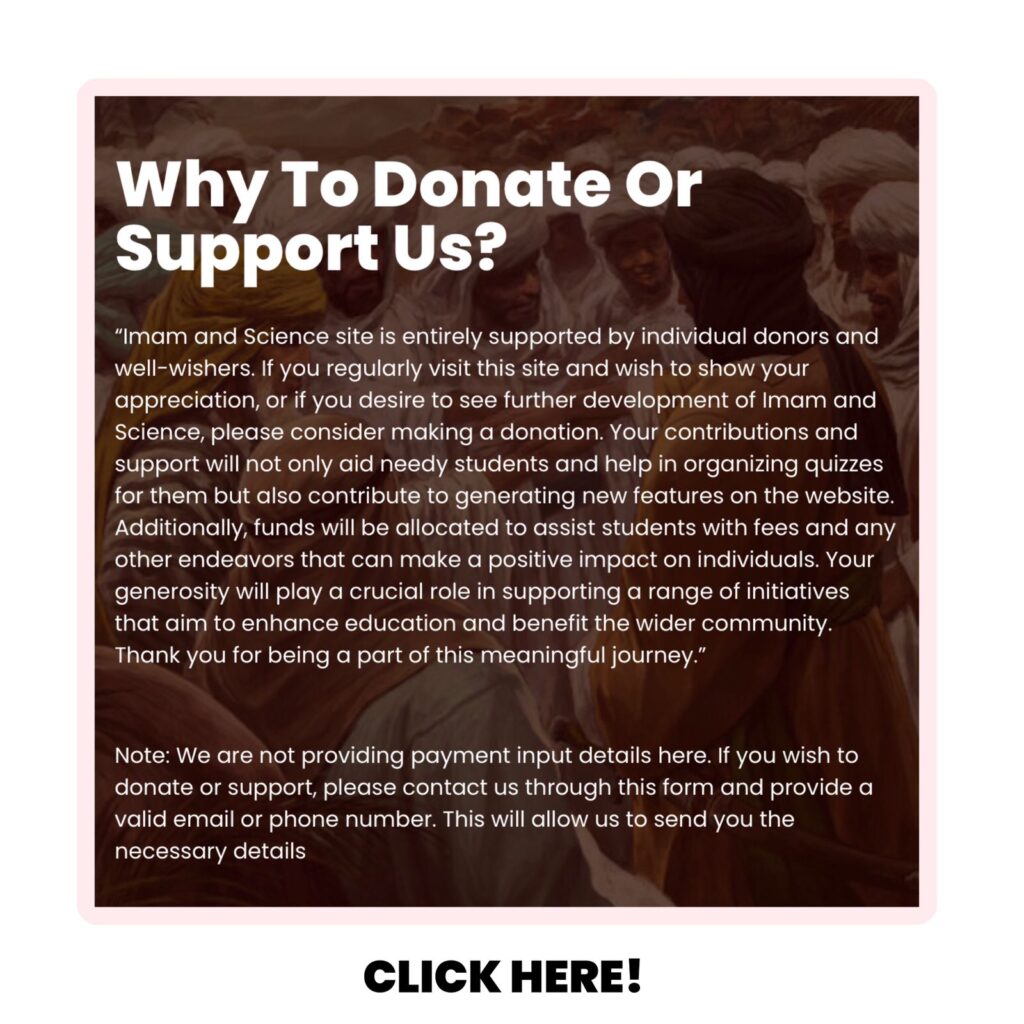THE BIRTH OF IMAM JAFAR AS-SADIQ (A.S.)
Jafar as-Sadiq (A.S.) was born in Medina, on the 17th day of Rabi u1-Awwal in the year 82 of the Hijra. His father was Mohammed bin All al-Baqat (A.S.). When he grew up he became famous by the name of Jafar as-Sadiq. The nurse who delivered him found him very weak, lean and thin. She was not sure that he would live for more than a few days. However, she wanted to have her reward and go. She put the boy by the side of his mother and went out of the room to see Mohammed al-Baqar (A.S.) and convey the good news to him. If the new born was a girl, the nurse could not hope to get anything. No one in Arabia rewarded a nurse for delivering a girl, but everyone gave something to one who delivered a boy. Until A.H. 82, most Arabs were following old traditions. They were delighted with the birth of a boy and disappointed with the birth of a girl.
Birth and Early Life:
Since Mohammed al-Baqar (A.S.) was not at home, the nurse went to Ali ibn Husain (A.S.) well known as Zain ul. Abideen, the grandfather of the boy. When the nurse conveyed the tidings of the birth of his grandson, the Imam blessed the boy and asked the nurse whether she had given the good news to the father of the boy as well. “He is not at home,” replied the nurse, “otherwise I would have informed him also.” Ali ibn Husain (AS.) said: “I want to see the boy, but do not bring him out. It is very cold today.” Then he asked her whether the baby was handsome. The nurse could not dare to say that me boy was very weak. She only said that he was beautiful and had lovely blue eyes. Ali ibn Husain (A.S.) remarked. “Oh, his eyes are just like the eyes of my mother. May God bless her soul.”
The eyes of Shahar Banu, daughter of Yezdagird III, were blue. According to the Law of Mendel, Jafar as Sadiq (AS) had inherited the blue color of his eyes from his grandmother.
It is reported that the eyes of Kayhan Banu, another daughter of Yezdagird, who was among the prisoners brought from Medain to Medina, were also blue. If this story is correct, he had inherited blue eyes from the two sisters belonging to the royal family of Iran. Kayhan Banu was also his grandmother.
Ali ibn Abi Talib (A.S.), who was the guardian of the prisoners belonging to the royal family of Iran, gave Shahar Banu in marriage to Imam Husain (A.S.) and Kayhan Banu to Mohammed ibn Abi Bakr, whom he loved as his own son. When Ali became the caliph, he appointed Mohammed as the Governor of Egypt.
Mohammed ibn Abi Bakr had a son from Kayhan Banu by the name of Qasim. Umme Farva, daughter of Qasim, was married to Mohammed al-Bagar (A.S.) and was the mother of Jafar as-Sadiq (A.S.).
Jafar as-Sadiq (A.S.) was born 82 years after the migration of Prophet Mohammed (SAW) to Medina. At that time, the Meccans were no longer addressed as Muhajirs or emigrants, and local residents of Medina were not called Ansars. Yet, engaging wet nurses for newborns was a custom among Meccans, including the family of Ali ibn Husain.

Mohammed al-Bagar wanted to hire a nurse, but Umme Farva did not agree. She said that she would nurse the baby herself. Most probably his weakness raised a feeling of pity in her heart. She might have thought that such a weakling should not be made to depend upon a wet nurse, who, however sympathetic, would not take as much care as the mother.
There are a number of stories about the childhood of Jafar as-Sadiq. It is said that he was born circumcised and with a full set of teeth. He might have been born circumcised, since many boys are born as such, but it’s unbelievable that he had a full set of teeth at the time of his birth. If that was the case, his
Mother could not have nursed him when babies grow teeth, as it becomes very painful to nurse them. For that reason, mothers usually stop nursing babies when they grow two sets of upper and lower teeth. There is another story that says he began to speak as soon as he was born.
It is also reported on the authority of Abu Huraira, a famous companion of the Prophet, that the Prophet of God had said about Jafar as-Sadiq (A.S.) that one of his descendants would become very famous as Sadiq (truthful).
Some traditions reported in the name of Abu Huraira are nothing but forgeries. Abu Huraira himself was not a forger and did not forge traditions, but others fabricated them in his name thinking that they would be readily accepted by the people since he was a trusted companion of the Prophet. Some of the forgers, either out of repentance or due to a prick of conscience, have acknowledged that they had fabricated traditions in his name.
It is obvious that such traditions, which have no historical validity, have originated from the sources of the Shias, who believe that their Imams (divine leaders) were chosen by God and had unlimited power and knowledge. Anyone doing research on the life of Jafar as-Sadiq (A.S.) should ignore such frivolous stories. One must take into account only the important and authentic facts of his life.
Four facts show us that from his childhood, Jafar as-Sadiq (A.S.) was favored by nature:
- He was born very weak but did not suffer from any childhood diseases, which were common in those days. After two years, he became quite robust and strong.
- Jafar as-Sadiq was born into a well-to-do family. His father and grandfather were men of substance in Medina.
- His father, Mohammed al-Baqir, was a learned man, and his mother, Umme Farva, just like all the female descendants of Abu Bakr, the first caliph of Islam, was also an educated lady.
- His father and mother started teaching him when he was only two years of age.
It is said that a child’s retentive memory is best when he is between two to six years of age. Some authorities on education are of the opinion that between the ages of two to six, a child can be taught a foreign language in addition to his or her own mother tongue.
Home and Social Life:
As a rule, children whose fathers and grandfathers are learned persons have better chances of becoming learned than those who come from ordinary families. The father and grandfather of Jafar as-Sadiq were great scholars. His grandfather, Ali ibn Husain, had written a number of books whose names have been mentioned by Ibn Nadim in his book, Al-Fehrist, although there is no trace of them today.
Jafar as-Sadiq had many brothers and sisters. His parents educated them all, but they paid special attention to him from the time he was 2 years old because of his supernatural intelligence and wonderful memory.
Shias believe that it is an attribute of an Imam to have supernatural intelligence and memory. Since Jafar as-Sadiq (A.S.) was an Imam, he had supernatural intelligence and memory. This is not a valid argument. There have been many children in the world who had supernatural intelligence and memory, but they were not Imams. Ibn Sina and Abu Ala al-Muarra in the East and Tacitus in the West are the best examples. From childhood, they were highly intelligent and had wonderful memories. They remembered whatever they heard or read only once.
The midwives of Medina not only delivered babies but also worked as surgeons. They circumcised boys. The midwife who delivered Jafar as-Sadiq also delivered his younger brother two years later and circumcised him.
For this delivery, she received only 3 dinars. When she had delivered Jafar as-Sadiq, she had received 5 Dinars because he was the first boy born in the family. The birth of the first boy in a noble Arab family was considered to be a joyful event.
In those days, sword practice was very popular in Medina among children as well as grown-ups. It is said that Jafar as-Sadiq used to dance with other boys, holding a small sword in one hand and a stick in the other, while his mother, Umme Farva, recited the following verse:
“Abshiro, Habban Habba;
Qadda-hu numa;
Wajja-hu badr us-sama.”
(Good news to you; my beloved has grown up or has become tall and his face is as beautiful as the moon in the sky)
The old family house of Jafar as-Sadiq, which was on one side of the mosque of the Prophet (SAW) and where his great-grandfather, Husain ibn Ali, was born, was demolished at the time of the expansion of the mosque. From the money which was received from the public treasury in compensation, a plot of land was purchased by the side of a newly constructed road, called Musqa, and a house was built there. That house, just like all the new houses of Medina, was constructed by Iranian architects.
The courtyard of that house, which was probably planned by his great-grandfather, Ali ibn Abi Talib, was spacious and provided a good playground for children. After finishing his lessons, Jafar as-Sadiq used to play there with his friends.
There are different reports as to when Jafar as-Sadiq started attending classes, which were run by his father. Some say that it was at the age of 3 years, and others say at the age of 5. One of the Muslim historians of North Africa, Mohammed Abu Bakr, well-known as Ibn Abi Rindega, who was born in 451 of the Hijra and died in 520 Hijra, has written in his book, Ikhtisar, that Jafar as-Sadiq started attending classes when he was ten years old. This report seems to be quite logical. Before that time, he did not attend any classes. Mohammed al-Bagar taught him at home.
Message from Imam And Science:
All the text on this blog is sourced from “Maghaz e Mutafakir Began Shia” and rewritten and formatted by the Imam and Science team. Our mission is to preserve the teachings of Imam Jaffar as-Sadiq and share insights about his life. Your support helps us continue this mission. If you’d like to learn more about the book, click here. If you find any mistakes in the blog, please contact us via email or our Instagram account. Keep reading and learning! Comment and Share!







